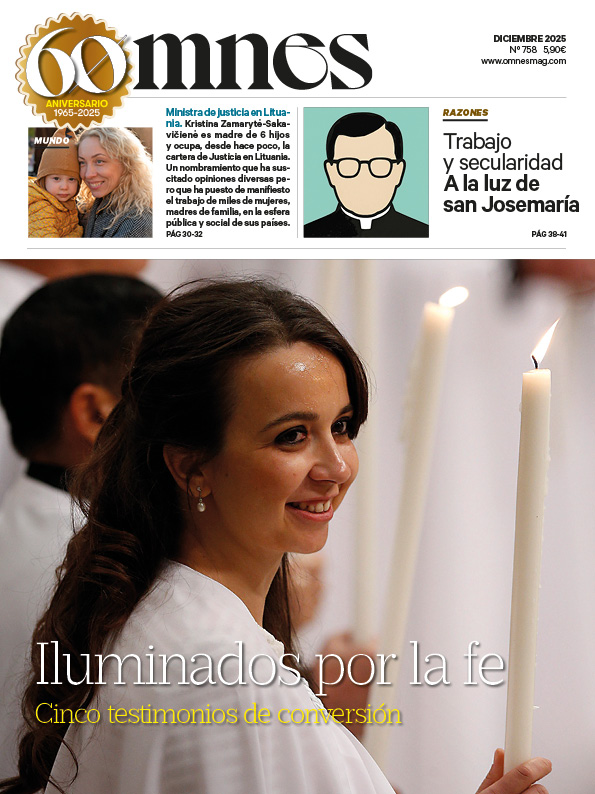We live in a time of great uncertainty. We often blindly believe what influencers on social networks propose to us, without digging deeper. However, we are hungry for truth and certainty.
The same thing has happened to the Christian faith in the last two centuries: with the Enlightenment and secularization, many things that were taken for granted have been questioned, to the point of denying the historical existence of Jesus of Nazareth, as well as his divine identity. At the same time, credit is given to self-styled historians who spread theories without sources or solid foundations.
For those who wish to approach the historical figure of Jesus, we will undertake a journey through the sources and methods of research on the Nazarene that follows a series of articles already published by Omnes on the life of Jesus of Nazareth, his cultural and geographical environment and his death.
What is History?
Let us begin by defining what history is. First, it should be noted that the term derives from the Greek ἱστορία (historia) meaning research, and has the same root ιδ- as the verb ὁράω (orao, to see, to see, verb with three roots: ὁρά-; ιδ-; ὄπ-). The perfect ὁίδα, òida, then, means literally 'I saw', but, by extension, 'I know'. It refers, in practice, to observe and, consequently, to know after experiencing: the same sense we find also in the root of the Latin verb video (v-id-eo and in the term of Greek origin 'idea'). I would add, moreover, that a requirement of historical research is, in addition to the critical sense, intelligence, in the literal sense of the Latin word: intus lĕgĕre, that is, to read inside, to go deeper, maintaining the ability to consider the whole of facts and events.
The historical-critical method
The Enlightenment raised doubts about the figure of the Nazarene, but it also prompted the development of historical research through the historical-critical method, aimed at assessing the reliability of the sources. This method, developed since the 17th century, is applied not only to the Gospels, but to any text transmitted in different variants, in order to reconstruct its original form and verify its historical content.
In the last 150 years, the need to historically substantiate Christian doctrine has led the Catholic Church to firmly reaffirm the historicity of the Gospels, while historians, scholars and archaeologists have used the historical-critical method to distinguish between the "historical Jesus" and the "Christ of faith". However, an excessively ideological application of this method has often led to a clear separation between the pre-Gospel Jesus and the "Christ of faith". Easter and the Christ after Easter. To respond to these doubts, the Church has deepened the exegetical and archaeological study, reaffirming in the Second Vatican Council ("Dei Verbum") "firmly and without any hesitation the historicity" of the Gospels, which "faithfully convey what Jesus, Son of God, during his life among men, actually did and taught for their eternal salvation, until the day he was taken up to heaven."
The Church's position thus combines the "historical Jesus" and the "Christ of faith" in a single figure. However, the vast majority of historians - Christian, Jewish, Muslim or non-believer - do not doubt the historical existence of Jesus of Nazareth. On the contrary, the historical and archaeological evidence in his favor continues to mount, reinforcing the reliability of the Gospels and other New Testament writings.
The "historical Jesus" approach
Today, most historians agree on the historical existence of Jesus, with an increasing amount of corroborating historical and archaeological evidence. This is because historical research has developed around his figure in three main phases:
- First Search or Old Search, initiated by Hermann S. Reimarus (1694-1768) and continued by scholars such as Ernest Renan, author of the famous "Life of Jesus". This phase, influenced by enlightened rationalism, systematically denied all the prodigious facts linked to the figure of Jesus, without questioning his existence. However, it soon ran up against its own ideological limitations, as Albert Schweitzer pointed out. Indeed, none of the protagonists of this phase of research ever paid attention to the historical context and archaeological sources, even if Renan himself romantically referred to Palestine as a "fifth gospel".
- Second Quest (New Quest or Second Quest), officially initiated in 1953 by the Lutheran theologian Ernst Käsemann, but in reality already initiated by Albert Schweitzer, who pointed out the limitations of the first one. It contrasted with an earlier phase, called No Quest, advocated by Rudolf Bultmann, who was convinced that historical research on Jesus was irrelevant to the Christian faith. The Second Quest rejected the ideological rejection of the "Christ of faith," adopting a more critical and integrative approach, which included the prodigious events without excluding them a priori.
- Third Search, predominant today.
The Third Search
While the First Search was conditioned by rationalist ideology and the Second Search introduced a more balanced approach, the Third Search is characterized by a greater attention to the historical context and interdisciplinarity, combining philology, archaeology and hermeneutics. Today, thanks to this method, we have an increasingly solid picture of the historical existence of Jesus and his relevance in the history of the first century.
The exponents of this Third Quest start from the assumption formulated by Albert Schweitzer: one cannot ideologically reject everything in the Gospels and the New Testament that has a miraculous character, discarding it because it does not conform to the canons of enlightened rationalism. Moreover, as Benedict XVI (exponent of the Third Quest, together with authors and scientists such as the Italians Giuseppe Ricciotti and Vittorio Messori, the Israeli Jew David Flusser and the German Joachim Jeremias) adds in his book Jesus of Nazareth, the limits of the historical-critical method consist substantially in "leaving the word in the past", without being able to make it "current, today"; in "treating the words in front of us as human words"; finally, in "further subdividing the books of Scripture according to their sources, but the unity of all these writings as Bible does not result as an immediate historical fact".
The Third Search resorts to textual analysis and hermeneutics to get as close as possible to the original form of the sources under consideration (in this case those relating to Jesus) and includes, as we said, scholars such as the Israeli Jew David Flusser (1917-2000), author of fundamental writings on ancient Judaism and convinced, like many other contemporary Jews, that the Gospels and Pauline writings represent the richest and most reliable source for the study of Second Temple Judaism, like many other contemporary Jews, that the Gospels and the Pauline writings represent the richest and most reliable source for the study of Second Temple Judaism, given the loss of other contemporary materials due to the destruction caused by the Jewish Wars (between 70 and 132 AD.C.). c.).
In the following articles we will see how this methodology has already been applied by the Church, over the centuries, to historical and archaeological sources about the figure of Christ.











